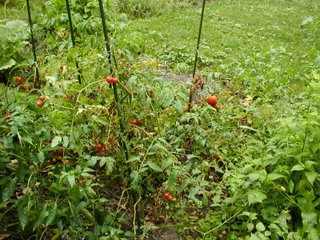The summer sausage episode part 1
1. The Get
I paid twice as much (per pound) for four times as much as I wanted, and I said thank you.
Saturday I went to my local meat packer/processor, twice. Even though I have been there five or six times in as many months, when I go, I still have the nervousness of a tourist asking for baba ganoush in Beirut. The first time we pulled up an older man was walking out from one side of the building, chasing off the casual pecking chickens in the lot, cursing in a combination of English and some eastern European language. He wore a white coat with a white apron and heavy boots. It was uncomfortable with how he yelled; I felt like I was in a stranger’s back yard where a father was yelling at his children to pick up the toys for the tenth time. I followed him towards the store, he went in the out doors, I went in the in doors. I looked around there were maybe ten people in line maybe another ten at the meat counter. The old man stood at the end of checkout preparing to bag still grumbling. The woman behind the register said to him, "It’s okay Dad." He turned and looked at me as I was surveying the crowd, and said gently: "I hate it when it gets crowded, it should be McDonald’s, fast service, but the people are not so fast."
"I’ll come back later."
"No, no don’t worry, take a number they will help you."
"Yeah, I’ve got the kids in the car, I’ll come back, thank you."
I came back about an hour later and it was empty. I asked for some jowl, The man, clarified my request: "Pig?" He squeezed his cheek, "Cheek?" Yes. He grabbed a plastic bag and walked to the back room.
The retail room of the processing plant is not very big, you walk in the meat cases are arranged in a U shape with an island of spices and additives in the middle. On one side are open cold cases with packaged chicken, beef, sausages, tripe hooves, trotters and various smoked and cured bits. Forming the bottom of the shape are two glass cases one with chicken and catfish, then another with beef. On the far side there is one case for lamb and three for pork. Each of the pork cases get gradually more interesting starting with pork chops and loins, then finishing with bellies, ears, and snouts.
At the corner between the beef and the lamb case, a small cutting table was set in the crook. The man returned with a large piece of meat in his arm. He set it on the table.
“how much do you want?”
“Just one, I just need a pound”
It was a pig’s head.
“Skin on, skin off?”
“Skin off, please.”
He took a long knife and started at the ear. No good. The knife was dull, he looked around for another, then he walked to the back room. It’s not too often you see a pig’s head, he had big ears and blue eyes. I started to feel a little queasy so I turned away.
The man returned with a short knife and quickly went to work. I leaned close to watch. He made a light cut below the ear then with his fingers he pulled the skin, it came off like a wet sheet of wallpaper. With bigger cuts he worked the cheek off and down and around the jaw line. Side two, repeat.
“Four pounds, you want...” He starts to remove…
“No I’ll take them both, it’s beautiful, thank you.”

Diced Jowl
2. The Prep
Good thing I got two cheeks, each one yielded only eight ounces of pure fat, which was a little less than what I needed. The recipes are thuringer and summer sausage. I had planned on only making the summer sausage when I realized that I had the ingredients on hand for both. The recipes are almost exactly the same except that summer sausage is mostly beef, and the pork thuringer has the added ingredient of whole peppercorns.

Both sausages are fermented, in this case, the fermentation is simulated by an ingredient called Fermento. Fermento (according to the cookbook) is a dairy based product that creates a tanginess that is similar to bacteria fermenting over a long period of time in a controlled environment. But we only have three days and a fridge. Fermento looks and smells like really sour powdered buttermilk. The other ingredient making its first appearance is dextrose. We’ll use that (again, according to the cookbook, I’m following the recipe this time, I promise) in place of sugar because it more readily distributes in the mixture. Each recipe calls for grinding and mixing together the ingredients, then a fermentation period: For the thuringer, three days, for the summer sausage two.

It's like watching sausage being made.
After I let them sit for a few days I ground them again and stuffed them into casings. Now put them onto smoke sticks and let them air dry…wait a second who has smoke sticks?

How about some stainless steel S hooks from an old IKEA pot rack. After drying for ten hours cold smoke…wait this is getting complicated, a cold smoke? Ice cubes in the water pan? Tune in next week we’ll see what happens.
cheers

















